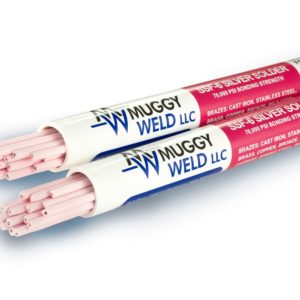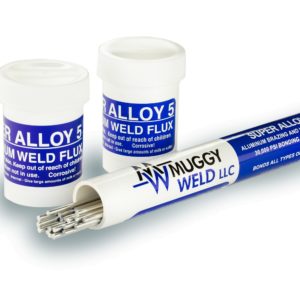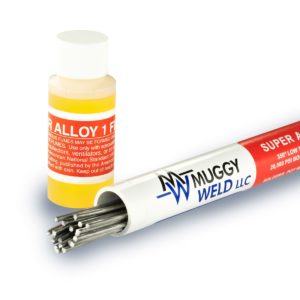Solder lead fishing tackle with Super Alloy 1
On occasion, fishermen may only have a few ounces of lead to make a repair, which is acceptable if the tides are slow or they aren’t fishing in deep water, but when the lead needs to reach deep water fish, it may be necessary to solder lead together.
For this reason, we’re frequently asked “Can Super Alloy 1 solder lead without melting the lead?” and the answer is yes. While lead melts at 621ºF, Super Alloy 1 melts at only 350ºF–making this application a quick and easy one. Lead-free Super Alloy 1 can solder any lead, and can solder zinc to lead, or a variety of metals to lead. A simple hand held propane torch is all that’s required–making this an inexpensive, convenient repair for any avid sport fisher.
Waterproof lead melts easily and is less prone to corrosion, enabling its use in many applications such as fishing. Although lead is used extensively in automobile parts and pipes, it is highly toxic and must be handled properly. Be sure you’re in a properly ventilated area (outside on a boat is adequate ventilation) and wear proper safety gear when handling lead.
First, pre-clean the lead until you reach bare un-oxidized metal, then dip the soldering rod into the flux container and apply the flux to the lead joint. Broadly heat the parent metal with your torch until the flux changes color to root-beer brown, indicating the proper working temperature. Once the lead has reached 350ºF, simply add the solder to the lead part to melt the rod. Continue adding more flux and more rod, effectively building the joint layer by layer. Once the lead has cooled, use a wire brush and warm water to remove the remaining flux. It’s that simple
Disclaimers:
Please visit https://www.aws.org/Standards-and-Publications/Free-Resources/#YourResources prior to using Muggy Weld products, and adhere to all AWS welding safety guidelines.
Further product safety information is available at http://muggyweld.com/safety-guidelines
Muggy Weld LLC shall not be liable for any loss, injury, claim, liability, or damage of any kind resulting in any way from (a) your use of this Site, (b) any services or products obtained from this Site, (c) any errors in or omissions from this Site, (d) the unavailability or interruption of this Site or any features thereof, (e) any content contained on this Site.
MSDS sheets available with purchase from MuggyWeld.com, upon request.
Check Out These Products
-

SSF-6 Silver Solder Rod: Flux-Coated SSF-6 56% Brazing Rod
Price range: $69.00 through $260.00High-Strength, 56% Silver Solder Rod🌡 Melting Temperature 1150 / 621 ⇄︎ Bonding Strength 70000 psi, 482.63 MPa 🔧︎ Sizes Available (in) 1/16 🔧︎ Sizes Available (mm) 1.58 -

Super Alloy 5 Aluminum Welding and Brazing Rod
Price range: $69.00 through $109.00600°F aluminum welding, brazing, and soldering rod. Ideal for aluminum boat repair and cast aluminum.🌡 Melting Temperature 600 / 317 ⇄︎ Bonding Strength 30000 psi, 206.84 MPa

